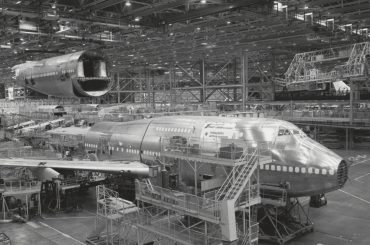 Remember November 25, it’s an historic day for Australian military aviation. It is not every day that the Australian government commits to buy a new fighter, but today it did just that in committing to buy 14 Lockheed Martin F-35 Joint Strike Fighters – JSFs – for the RAAF.
Remember November 25, it’s an historic day for Australian military aviation. It is not every day that the Australian government commits to buy a new fighter, but today it did just that in committing to buy 14 Lockheed Martin F-35 Joint Strike Fighters – JSFs – for the RAAF.
Apart from the 2006 buy of 24 Boeing F/A-18F Super Hornet ‘bridging’ fighters, the last time Australia announced a fighter acquisition was the October 1981 decision to buy 75 (then) McDonnell Douglas F/A-18A/B Hornets to replace the RAAF’s Mirages in a deal then valued at $2.5bn.
Interestingly, today’s decision to buy just 14 F-35s (valued at $3.2bn including spares and support – which very crudely works out to be $228m per aircraft!) is a much lower number than either of the Hornet acquisitions, and reflects both current federal government budget restrictions and continued uncertainties with the still relatively immature JSF program. The 14 F-35A jets will be enough to equip a single squadron, which will spend its initial years in the US for “initial training and test activities”, according to the Defence Minister’s announcement.
So this announcement is both at once a decision to buy the JSF, and a decision to defer the purchase the bulk of the JSF fleet, up to 86 aircraft – ie the further minimum of 58 jets to meet the White Paper requirement for an initial JSF force of “no fewer” than 71 aircraft to replace the ‘classic’ Hornets, then the final batch of 25 or so aircraft to replace the Super Hornets.
The decision to buy the bulk of the F-35 force, which will allow the RAAF to operate three operational squadrons and a training unit, has been put off until 2012, while a decision on the final batch for a fourth squadron to replace the Super Hornets “will be considered at a later date” – on the ‘never never’, in effect.
These are very long timelines here – the first squadron is not due to become operational with the JSF until nearly a decade from now in 2018, while, according to the ministerial statement, “All three operational squadrons are planned to be in service in 2021.”
With those long timelines, it seemingly presents some challenges for the RAAF fighter force transition. Will the last of the classic Hornets, which is already known to have fatigue issues, last in service as long as late next decade to allow for the transition to the JSF (the youngest airframe will be 30 years old in 2021)? Will the classic Hornets have to be managed under an expensive ageing aircraft program, like with the F-111, to nurse them through?
With the JSFs entering service between 2014 and 2021, for how much of that seven year timeframe will the RAAF be operating three fast jets – classic and Super Hornets and JSF – side by side, when one of the selling points of the original JSF decision was the efficiencies from a single type fighter force?
And what of replacing the ‘bridging’ Super Hornets? They were acquired to replace the F-111 with the intention of being in service for a 10 year period before they themselves were replaced by JSFs. That may yet happen, but doesn’t look likely. More probably, they’ll remain in service for 20 to 30 years like every other RAAF fighter, and eventually be replaced by something like a UCAV, or perhaps a ‘Super’ JSF (which may well be unmanned).
Here’s a final thought – the junior fighter pilots flying the JSF when the last of the JSF squadrons becomes operational are only in primary school today!











